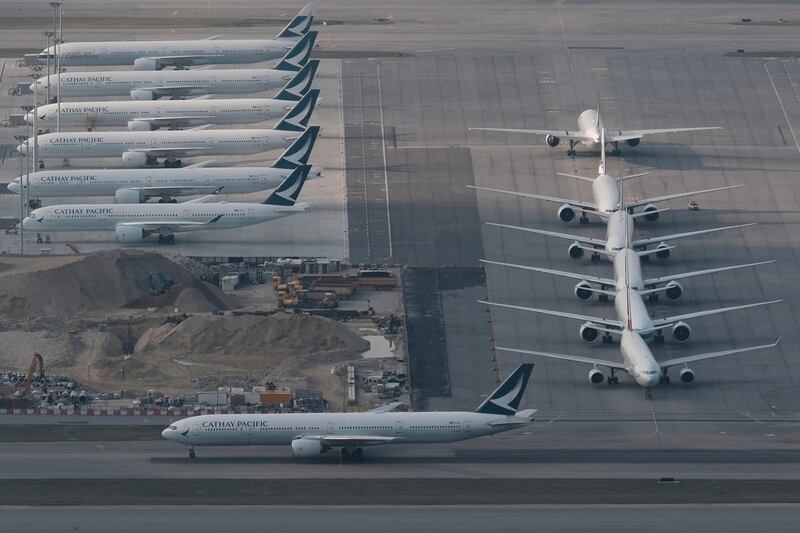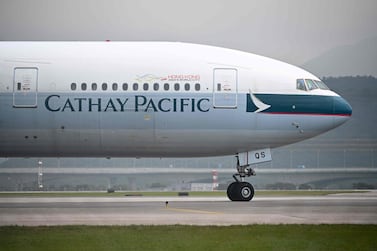Hong Kong’s Cathay Pacific said it is grounding 40 per cent of its passenger fleet for the "foreseeable future", emphasising the need for restructuring to survive the Covid-19 pandemic.
The airline is burning through HK$1.5 billion (Dh711 million) to HK$2bn per month and will continue to see "significant cash burn" until the market recovers, Cathay Pacific said in a filing to the Hong Kong stock exchange on Monday.
"We are weathering the storm for now, but the fact remains that we simply will not survive unless we adapt our airlines for the new travel market," Ronald Lam, Cathay Pacific group chief customer and commercial officer, said. "A restructuring will therefore be inevitable to protect the company, the Hong Kong aviation hub, and the livelihoods of as many people as possible."
In June, Cathay Pacific announced a HK$39bn rescue package from the government to help it survive the dual impact of the coronavirus crisis and social unrest in its home city. This recapitalisation was completed on August 12.
"The recapitalisation provides us time and a platform from which to transform our business and continue to operate in the short term; however, it is an investment that we need to repay," Mr Lam said.
The government bailout was a relief for the airline that reported a first-half loss of HK$9.87bn compared with a profit of HK$1.34bn in the same period last year as passenger traffic plunged. The airline is set to make recommendations to the board in the fourth quarter about the future shape and size of the company.
In August, Cathay Pacific and its unit Cathay Dragon carried 35,773 passengers, down by 98.8 per cent compared to the same month in 2019, amid continued capacity reductions and weak demand.
Passenger load factor, a measure of how well airlines fill their seats, dropped by 60 percentage points to 19.9 per cent. Capacity, measured in available seat kilometres, shrunk by 92.2 per cent. Revenue passenger kilometres in August fell 98.1 per cent year-on-year.
The airline is planning to transfer two-fifths of its passenger fleet to locations outside Hong Kong as it operates "just a fraction" of its scheduled services.
"Passenger demand continued to be very weak as new waves of Covid-19 in our key markets dampened overall travel sentiment," Mr Lam said. No new destinations were resumed in August.
The two airlines carried 102,122 tonnes of cargo last month, a decrease of 36.7 per cent from August 2019.
Air freight remains the stronger performer in the business, buoyed by movement of pharmaceutical goods and live animal shipments across the network.
"It is clear that we are facing a long and uncertain road to recovery," Mr Lam said.
Looking ahead, the airline is "cautiously optimistic" about a "reasonably promising" cargo peak season, having received strong pre-orders.
However, there are still no solid signs of improvement on passenger demand, leading the airline to reduce its operating passenger flight capacity to about 10 per cent in September and October, the company said.








